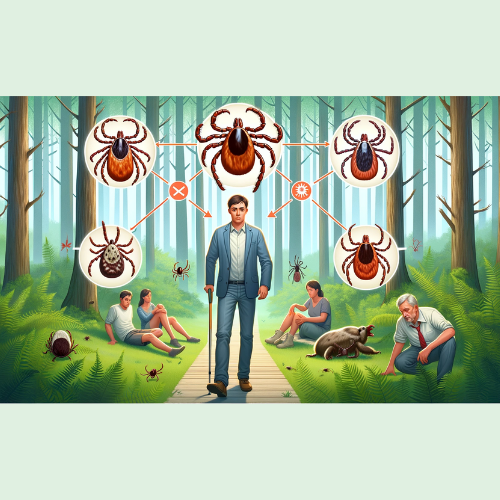
03 Jan The Dangers of Ticks
Lifecycle, Risks, and Environmental Impact
Ticks, small arachnids often found in wooded and grassy areas, pose significant health risks to humans and animals. This blog aims to shed light on the dangers associated with ticks, emphasizing the importance of awareness and prevention in managing these risks. Understanding the behavior, habitats, and life cycle of ticks is crucial for effective prevention and treatment of tick-borne diseases.
Thriving in environments that offer ample opportunities to find hosts, ticks typically inhabit wooded, bushy, or grassy areas. They lie in wait for potential hosts to pass by. Ticks undergo a life cycle that includes four stages: egg, larva, nymph, and adult. During these stages, they feed on the blood of various hosts, including mammals, birds, and occasionally reptiles or amphibians.
Tick bites are not only a nuisance but can also be a vector for serious diseases. Lyme disease, arguably the most well-known tick-borne illness, can cause symptoms ranging from fever and headache to severe joint pain and neurological problems if left untreated. Other diseases transmitted by ticks include Rocky Mountain spotted fever, anaplasmosis, and babesiosis, each presenting its own set of health challenges.
Climate change is playing a significant role in the increasing prevalence and geographic spread of ticks. Warmer temperatures are allowing ticks to expand their range and increase the duration of their active season. This change necessitates heightened awareness and preventive measures in regions previously unaffected by tick-borne diseases.
Prevention and Safe Removal
Preventing tick bites is essential, particularly in areas where ticks are prevalent. Using insect repellents, wearing protective clothing, and avoiding known tick habitats can significantly reduce the risk of bites. Regularly checking for ticks after outdoor activities is also crucial, as prompt removal of ticks can prevent disease transmission.
If a tick is found attached to the skin, it’s important to remove it promptly and correctly. Using fine-tipped tweezers, grasp the tick as close to the skin’s surface as possible, pulling upward with steady, even pressure. After removal, clean the bite area and your hands with rubbing alcohol or soap and water. It’s advisable to avoid folk remedies, such as painting the tick with nail polish or using heat to make the tick detach from the skin.
In the event of a tick bite, consulting with a healthcare professional is recommended, especially if symptoms of a tick-borne disease develop. Early diagnosis and treatment are vital in managing the health risks associated with tick bites effectively.
Conclusion
The dangers posed by ticks are a growing concern, necessitating increased awareness and proactive measures for prevention and treatment. Understanding the risks, habitats, and appropriate responses to tick encounters is essential. As we continue to witness changes in tick populations due to environmental factors, staying informed and vigilant is more important than ever. Keep following our blog for more insights and advice on managing the risks associated with ticks.


No Comments